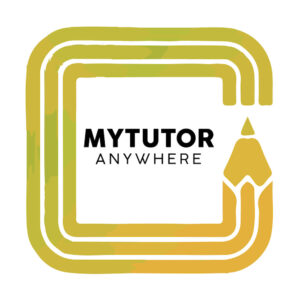Orton-Gillingham Approach
Have you heard of the Orton-Gillingham approach and wondered if it could help your child learn to read? This article will discuss the novel approach and walk you through the benefits it can bring for your child.
What is the Orton-Gillingham approach?

For many students, learning to read and write does not come easily. These students may struggle to make sense of different letters or may find spelling especially challenging. Students with learning disabilities like dyslexia may experience even more difficulty in the traditional classroom when first learning to read.
Most traditional curriculums are structured to meet the needs of students who do not struggle with literacy skills and who can absorb new letters and words without too much difficulty. That means many students are left behind, losing motivation and attention in the classroom.
The Orton-Gillingham approach offers an innovative, evidence-based alternative for students who are finding the process of learning to read especially challenging. This approach is designed for students to learn in a one-on-one tutoring environment to give students the attention, feedback, and hands-on learning opportunities they need to be successful.
One of the key principles of the Orton-Gillingham approach is its multi-sensory approach to learning. Many students learn best when presented with a range of stimuli, instead of the traditional classroom approach to learning to read. Under this approach, students are encouraged to associate different letters with different sensory experiences—touch, sight, and hearing.
Students are able to make deeper connections between letters and their corresponding sounds when they learn in an engaging, multi-sensory way. For example, they can learn the sound of the letter ‘r’ by eating raspberries or the sound of ‘sh’ by playing with shaving cream. These interactive experiences allow students to process words and word parts in more meaningful ways, which can give them a better advantage during the process of learning to read.
Another important feature of Orton-Gillingham is its multi-step process. Students are introduced to the approach at a developmentally appropriate level and gradually work their way through the process of learning to read in an evidence-based structure.
Students first learn to make connections between certain letters and their corresponding sounds, then they build those letters into words. Eventually, they are better able to make sense of and engage with language. For many students, the Orton-Gillingham approach allows them to overcome many of the barriers that can initially leave them struggling and unmotivated in the classroom.
Motivating aspects of the Orton-Gillingham approach

Students need to stay motivated to succeed in school. When students have learning disabilities that make learning to read difficult, they may struggle to keep up with the rest of their class.
Here are some key motivating features of the Orton-Gillingham approach:
Students aren’t limited to traditional reading.
Students learn best when they are fully immersed. The Orton-Gillingham approach relies on an innovative interconnection of sensory experiences to give students the best opportunity to learn.
Students learn during one-on-one sessions with a tutor.
When a student is struggling to learn to read, being lost in the crowd of a big classroom can make it even more difficult. The Orton-Gillingham approach offers students a personalized learning experience based on their unique needs and learning habits.
A tutor will meet with the student to work either one-on-one or in small study groups, giving students the individualized attention they need to be successful. Tutors can encourage their students and offer meaningful support and guidance during the learning process. One-on-one collaboration with a tutor can help students find the motivation to persist in their learning.
Students receive highly structured guidance.
While the Orton-Gillingham approach is an approach and not a curriculum, students follow a straightforward educational path. They progress at their own speed, depending on how much they have learned and whether they are ready for the next stage of learning.
Such a structure gives students realistic milestones and the guidance they need to achieve them, which means they can more easily get motivated on their present goal. Then, they can start making progress on their next one.
Increasing success leads to increasing motivation.
Many students struggle to find the motivation to learn because they notice themselves struggling in the classroom. They can become discouraged or disappointed, which can lead to a lack of motivation to continue.
The innovative strategy of the Orton-Gillingham approach allows students to learn in novel, engaging ways. When students start learning and improving, their self-confidence grows, which leads to increased motivation.
Which students are most likely to benefit from the Orton-Gillingham approach?
Often, students with dyslexia may benefit the most from the Orton-Gillingham approach. Students with dyslexia often struggle to identify letters and word parts and are more likely to find a multi-sensory approach more engaging and intuitive.
The approach was designed with students with dyslexia in mind, but many other students may experience challenges while they are learning to read and can benefit from the Orton-Gillingham approach. Students with a range of learning disabilities or special needs are also likely to find more success with this approach.
The Orton-Gillingham approach at My Tutor Anywhere
If you’re searching for Orton-Gillingham tutors near me, then My Tutor Anywhere could be exactly what you need. At My Tutor Anywhere, students learn during one-on-one tutoring sessions with an experienced, compassionate reading tutor. They are encouraged to explore reading, writing, and language in multi-sensory, experiential ways and are often more motivated, focused, and excited about learning as a result.
At My Tutor Anywhere, tutoring is offered in a virtual or in-person format, depending on your child’s needs and preferences. We have worked with a wide range of students, including students with dyslexia and other learning disabilities. You can trust that your child will be supported and guided throughout the entire process.
Learning to read is hard enough without extra barriers making it even more challenging. If your child is struggling with traditional classroom-based learning, contact us today to start crafting a personalized tutoring plan for your child.

